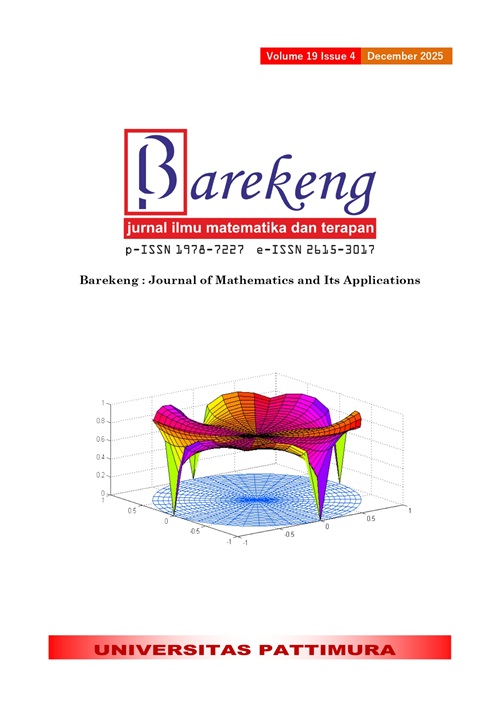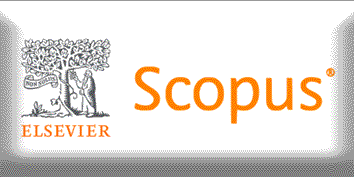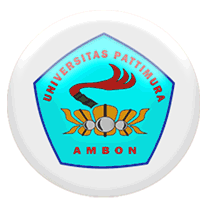PERSYMMETRIC MATRIX AND ITS APPLICATION IN CODING THEORY
Abstract
A persymmetric matrix is a square matrix that is symmetric concerning its antidiagonal. This article discusses some characteristics of a persymmetric matrix and its application in coding theory. A persymmetric matrix is used to form a generator matrix of binary reversible self-dual codes. A binary reversible self-dual code is a self-dual code whose reverse element is contained in the code. The methodology involves the implementation of flip transpose and column reversal to ensure the generator matrix satisfies both self-duality and reversibility. We begin with small-sized persymmetric matrices (e.g., 2×2 and 3×3) to extend the construction of the larger matrices. Combining a self-dual code and a reversible self-dual code of shorter length, and embedding persymmetric blocks, we construct new binary reversible self-dual codes of longer length. The novelty of this research lies in developing a new construction method for binary reversible self-dual codes derived directly from self-dual codes in the standard form, which has not been explicitly addressed in previous studies.
Downloads
References
Arthur Cayley ,.“II. A memoir on the theory of matrices,” Philos. Trans. R. Soc. Lond., vol. 148, pp. 17–37, Dec. 1858, doi: https://doi.org/10.1098/rstl.1858.0002.
B. P. Tomasouw, “KARAKTERISTIK MATRIKS CENTRO-SIMETRIS,” BAREKENG J. Ilmu Mat. Dan Terap., vol. 10, no. 2, pp. 69–76, Dec. 2016, doi: https://doi.org/10.30598/barekengvol10iss2pp69-76.
D. Patty, Z. A. Leleury, and J. A. Popla, “LESLIE MATRIX CONSTRUCTION AND ITS PROPERTIES IN PREDICTING THE SIZE OF THE FEMALE POPULATION,” BAREKENG J. Ilmu Mat. Dan Terap., vol. 18, no. 1, pp. 0637–0642, Mar. 2024, doi: https://doi.org/10.30598/barekengvol18iss1pp0637-0642.
G. Pailloux, P. Forster, J. P. Ovarlez, and F. Pascal, “ON PERSYMMETRIC COVARIANCE MATRICES IN ADAPTIVE DETECTION,” in 2008 IEEE International Conference on Acoustics, Speech and Signal Processing, Las Vegas, NV: IEEE, Mar. 2008, pp. 2305–2308. doi: https://doi.org/10.1109/ICASSP.2008.4518107.
M. Nouri, “BISYMMETRIC, PERSYMMETRIC MATRICES AND ITS APPLICATIONS IN EIGEN-DECOMPOSITION OF ADJACENCY AND LAPLACIAN MATRICES,” Int. J. Math. Comput. Sci., vol. 6, no. 7, pp. 766–769, 2012.
M. Aleroev, T. Aleroev, M. Kirane, and Y.-F. Tang, “ON ONE CLASS OF PERSYMMETRIC MATRICES GENERATED BY BOUNDARY VALUE PROBLEMS FOR DIFFERENTIAL EQUATIONS OF FRACTIONAL ORDER,” Appl. Math. Comput., vol. 268, pp. 151–163, Oct. 2015, doi: https://doi.org/10.1016/j.amc.2015.06.076.
A. I. Julio and R. L. Soto, “PERSYMMETRIC AND BISYMMETRIC NONNEGATIVE INVERSE EIGENVALUE PROBLEM,” Linear Algebra Its Appl., vol. 469, pp. 130–152, Mar. 2015, doi: https://doi.org/10.1016/j.laa.2014.11.025.
R. L. Soto, A. I. Julio, and M. Salas, “NONNEGATIVE PERSYMMETRIC MATRICES WITH PRESCRIBED ELEMENTARY DIVISORS,” Linear Algebra Its Appl., vol. 483, pp. 139–157, Oct. 2015, doi: https://doi.org/10.1016/j.laa.2015.05.032.
V. X. Genest, S. Tsujimoto, L. Vinet, and A. Zhedanov, “PERSYMMETRIC JACOBI MATRICES, ISOSPECTRAL DEFORMATIONS AND ORTHOGONAL POLYNOMIALS,” J. Math. Anal. Appl., vol. 450, no. 2, pp. 915–928, Jun. 2017, doi: https://doi.org/10.1016/j.jmaa.2017.01.056.
R. Vaia and L. Spadini, “PERSYMMETRIC JACOBI MATRICES WITH SQUARE-INTEGER EIGENVALUES AND DISPERSIONLESS MASS-SPRING CHAINS,” Linear Algebra Its Appl., vol. 585, pp. 164–177, Jan. 2020, doi: https://doi.org/10.1016/j.laa.2019.10.002.
Z. Li and X. Wang, “VERIFIED ERROR BOUNDS FOR REAL EIGENVALUES OF REAL SYMMETRIC AND PERSYMMETRIC MATRICES,” Math. Probl. Eng., vol. 2020, pp. 1–9, Dec. 2020, doi: https://doi.org/10.1155/2020/9240852.
H. J. Kim, W.-H. Choi, and Y. Lee, “CONSTRUCTION OF REVERSIBLE SELF-DUAL CODES,” Finite Fields Their Appl., vol. 67, p. 101714, Oct. 2020, doi: https://doi.org/10.1016/j.ffa.2020.101714.
X. T. Ngo, S. Bhasin, J.-L. Danger, S. Guilley, and Z. Najm, “LINEAR COMPLEMENTARY DUAL CODE IMPROVEMENT TO STRENGTHEN ENCODED CIRCUIT AGAINST HARDWARE TROJAN HORSES,” in 2015 IEEE International Symposium on Hardware Oriented Security and Trust (HOST), Washington, DC: IEEE, May 2015, pp. 82–87. doi: https://doi.org/10.1109/HST.2015.7140242.
E. Nachmani, E. Marciano, L. Lugosch, W. J. Gross, D. Burshtein, and Y. Be’ery, “DEEP LEARNING METHODS FOR IMPROVED DECODING OF LINEAR CODES,” IEEE J. Sel. Top. Signal Process., vol. 12, no. 1, pp. 119–131, Feb. 2018, doi: https://doi.org/10.1109/JSTSP.2017.2788405.
P. K. Kadbe and M. G. Waje, “ERROR DETECTION IN FAULT-TOLERANT REVERSIBLE CIRCUIT USING FREDKIN GATES,” in ICCCE 2021, vol. 828, A. Kumar and S. Mozar, Eds., in Lecture Notes in Electrical Engineering, vol. 828. , Singapore: Springer Nature Singapore, 2022, pp. 579–585. doi: https://doi.org/10.1007/978-981-16-7985-8_58.
A. N. Hidayat, V. H. Krisnawati, and A. R. Alghofari, “REVERSIBLE SELF-DUAL CODES OVER FINITE FIELD,” CAUCHY J. Mat. Murni Dan Apl., vol. 9, no. 2, pp. 287–296, Nov. 2024, doi: https://doi.org/10.18860/ca.v9i2.29116.
H. J. Kim, W.-H. Choi, and Y. Lee, “DESIGNING DNA CODES FROM REVERSIBLE SELF-DUAL CODES OVER GF (4),” Discrete Math., vol. 344, no. 1, p. 112159, Jan. 2021, doi: https://doi.org/10.1016/j.disc.2020.112159.
V. H. Krisnawati, A. R. Alghofari, and A. N. Hidayat, “REVERSIBLE (BISYMMETRIC) SELF-DUAL CODES OVER FINITE FIELDS WITH CHARACTERISTIC TWO AND THEIR APPLICATIONS TO DNA CODES,” Commun. Math. Biol. Neurosci., vol. 2025, https://doi.org/10.28919/cmbn/9267.
S. Ling and C. Xing, CODING THEORY: A FIRST COURSE, 1st ed. Cambridge University Press, 2004. doi: https://doi.org/10.1017/CBO9780511755279.
F. Gursoy, E. S. Oztas, and I. Siap, “REVERSIBLE DNA CODES USING SKEW POLYNOMIAL RINGS,” Appl. Algebra Eng. Commun. Comput., vol. 28, no. 4, pp. 311–320, Aug. 2017, doi: https://doi.org/10.1007/s00200-017-0325-z.
Copyright (c) 2025 Ardi Nur Hidayat, Vira Hari Krisnawati, Abdul Rouf Alghofari

This work is licensed under a Creative Commons Attribution-ShareAlike 4.0 International License.
Authors who publish with this Journal agree to the following terms:
- Author retain copyright and grant the journal right of first publication with the work simultaneously licensed under a creative commons attribution license that allow others to share the work within an acknowledgement of the work’s authorship and initial publication of this journal.
- Authors are able to enter into separate, additional contractual arrangement for the non-exclusive distribution of the journal’s published version of the work (e.g. acknowledgement of its initial publication in this journal).
- Authors are permitted and encouraged to post their work online (e.g. in institutional repositories or on their websites) prior to and during the submission process, as it can lead to productive exchanges, as well as earlier and greater citation of published works.






1.gif)



